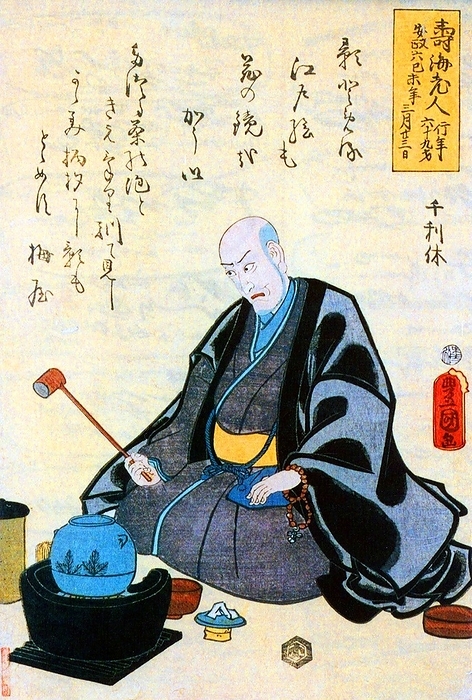
ED
Japan: Ukiyo-e portrait of Sen no Rikyu, 16th century Japanese Tea Master (1522-1591)
Sen no Rikyū (Sen Rikyu, 1522 - April 21, 1591, also known simply as Sen Rikyū), is considered the historical figure with the most profound influence on chanoyu ( <br/><br/><br/>Sen no Rikyū (1522 - April 21, 1591, also known simply as Sen Rikyū), is considered the historical figure with the most profound influence on chanoyu ( tea ceremony), the Japanese 'Way of Tea', particularly the tradition of wabi-cha.
He was also the first to emphasize several key aspects of the ceremony, including rustic simplicity, directness of approach and honesty of self. Originating from the Edo Period and the Muromachi Period, these aspects of the tea ceremony persist today.
Details
ID
177779648
Collection
License type
Editorial
Photographer
Creation date
05-01-2022
Contact Aflo for all commercial uses.

More
Top Categories
